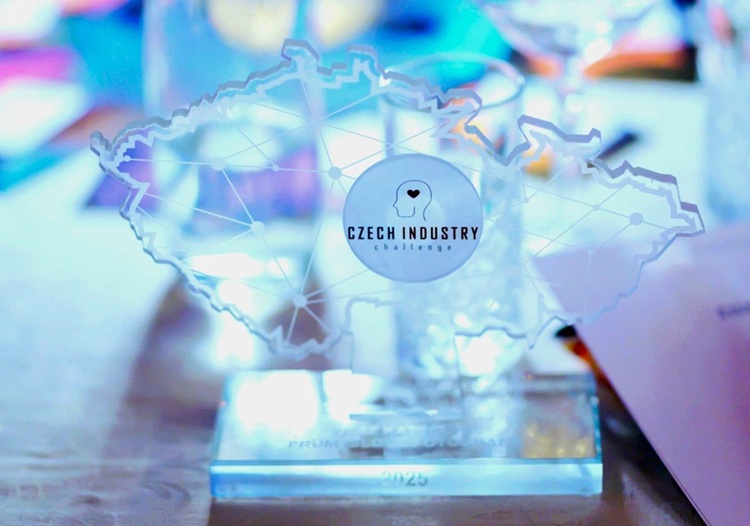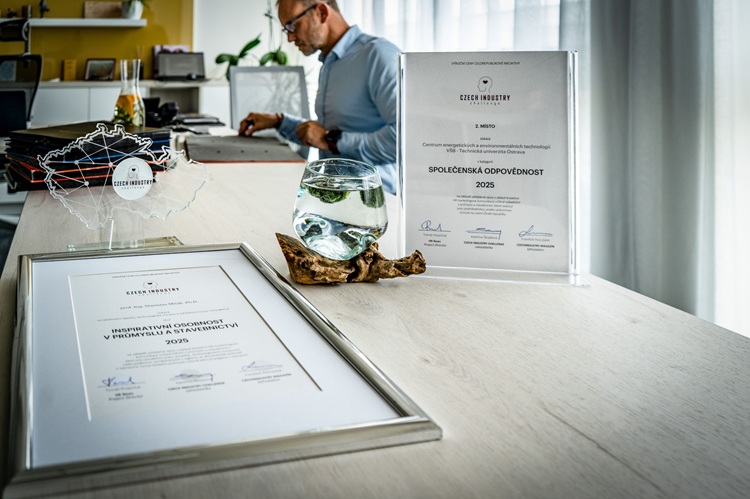The award confirms the long-term direction of the center, which connects research, industry, and the public sector in the field of sustainable energy.
“Sustainability is in our DNA. It’s not a one-off project but a well-thought-out strategy that reaches both the national and European levels,” says Stanislav Mišák, a CEET representative, in an interview revealing not only key projects and partnerships, but also the challenges the Czech Republic faces in the coming years.
CEET won a sustainability award in the Czech Industry Challenge. What does this mean to you?
Sustainability is very important to me personally. It’s a complex concept encompassing three key areas: economic justice, social responsibility, and environmental stewardship. These pillars form the foundation of everything we do at CEET. For us, sustainability is not only a value but also a commitment to the future. We treat it as a serious responsibility and strive to remain leaders in this field.
What do you think helped you win, both from your perspective and according to the jury?
I believe the key was successfully integrating all three mentioned areas into one attractive and structurally interesting solution. A significant factor was the recognition that this isn’t just about a single building – in this case, CEETe – but a clear, long-term strategic vision. It’s not an ad hoc solution but a deliberate process aimed at energy transformation.

How does CEET’s approach to sustainability differ from other research institutions? And what is the sustainability status at VSB – Technical University of Ostrava?
As a university representative, I can confidently say we’ve come a long way. We're systematically working to make the university campus energy self-sufficient and are actively addressing sustainability using all available resources. We've also made strides in campus biodiversity – connecting ecosystems, supporting beekeeping, and integrating other ecological elements. While these may seem like small fragments, combined with our energy self-sufficiency concept, they form a strong and functional whole. We integrate modern technologies while leveraging the scale and diversity of our campus – a major advantage.
At CEET, sustainability is firmly embedded in our strategy, vision, and mission. We aim to develop this approach not only nationally but also internationally. Our goal is to offer comprehensive solutions transferable to various infrastructure types across the EU.
Which sustainable projects from CEET and VSB-TUO would you highlight?
It’s hard to name just one – all our projects are part of a larger mosaic, with each piece playing a crucial role. However, in terms of significant impact, especially financially, I would highlight CEETe as an investment project that represents the potential for energy transformation through renewable sources and low-carbon technologies. It served as the initial impulse from which everything else developed.
Another major contribution comes from the REFRESH project – a flagship initiative in the Moravian-Silesian Region. CEETe and REFRESH are closely related and have been presented as such from the beginning. While REFRESH focuses on long-term decarbonization of the region, CEETe represents the immediate steps needed now.
There are also many complementary projects connecting national centers like the National Energy Centre and various initiatives funded by the Technology Agency of the Czech Republic or EU operational programs. We're also involved in calls from the Ministries of Industry and Trade, Environment, Transport, and others.
How do you involve partners and CEET components in your sustainable solutions? How do they contribute to sustainability?
That’s a very good and crucial question. Partnership is absolutely essential for us. We base it on three pillars – think of them as the corners of a triangle.
The first is the public sector – those who set goals and rules. The second is academia – the university and CEET, providing scientific background and research capacity. The third is industry – partners who help implement technologies and bring valuable real-world know-how.
We operate within this innovation ecosystem, striving to turn our sustainable energy solutions into real-world practice.
What are your future plans?
In research and sustainability, I hope our approach can expand internationally. What we’re building in the Czech Republic is deeply rooted in local conditions and needs, which makes our solutions adaptable and potentially useful for legislative reform where needed. Many strategic documents were created under different circumstances and now require updates.
If our work helps, even slightly, to adjust our societal direction, it would be a great success – nationally and at the EU level.
One of our key goals is to ensure the European Commission recognizes there’s a strong, responsible Czech team working systematically on sustainability – not just in science and research, but in shaping legislation, as a policy-making body. We want our results to make sense at home and in a European context. That would also strengthen the position of our representatives in EU institutions, giving them a stronger voice in advocating our views.
Recently, we had a visit from European Commission officials, who were very impressed by what we’ve achieved in the Czech Republic. But they were also surprised by how little of it reaches Brussels. That gap must be closed. As long as there’s a disconnect between what we can actually do here and what is communicated at the European level, it will be difficult to gain real negotiation power.
One of my top priorities is learning to better present our achievements to EU representatives – so their voices are not just supplementary, but impactful and able to influence European sustainability policy.
What are the most pressing challenges in the Czech Republic right now?
That’s a very timely question, especially after the recent blackout in Prague. Until then, we mostly heard about such incidents abroad or through media reports. This time, our own robust power grid collapsed. The N-1 security criterion failed because several energy sources couldn’t respond adequately. Despite claims of reliability, vulnerabilities remain.
This clearly shows the need to focus more intensely on ensuring stable, safe, and affordable energy for all. That is, in my opinion, one of the greatest societal challenges we currently face. VSB–TUO is actively involved – we’re seeking concrete solutions.
In the Moravian-Silesian Region, we’ve already made great progress. CEET, for example, prepared an impact study on coal phase-out and is involved in many projects offering solutions across the Ostrava agglomeration. The region’s priorities are clearly defined, and we know which problems are most urgent. That’s why we focus on practical, applicable outcomes.
Could you give examples of the most important ones?
Take the Dětmarovice power plant, which permanently stopped coal-fired electricity production this spring. It had been a stable energy source, especially during winter peaks. Finding a full replacement won’t be easy. CEET is actively working on analyses and solutions to ensure a smooth transition – both financially and in terms of feasibility.
The Prague incident showed how fast renewable energy is growing in our energy mix. The problem is that backup systems aren’t being built at the same pace. These are critical for handling fluctuations – such as power surges from renewables – and for keeping the grid stable.
Sustainability is a commitment. We’ve talked about 2025 – what will things look like in 2030 at CEET and the university?
At CEET, our development path is clear – as I mentioned, sustainability is in our DNA. We aim to further expand renewable energy use on campus while reducing overall energy demand. We also want to enhance biodiversity on our Poruba campus – for example, the green wall on the CEET building is just the beginning. More biotopes are planned to complement the surrounding environment naturally.
A key step will be building a hydrogen facility at the current bus stop area of line 37. This stop will be replaced by a modern hydrogen fueling station. In cooperation with the Moravian-Silesian Region and Ostrava’s public transport company, we’ll focus on low-emission public transport – starting with four buses.
I expect other university departments will follow a similar path toward sustainability. Some faculties are already considering installing photovoltaic systems. We also plan to implement campus-wide energy sharing and build a battery storage system to stabilize consumption.
And last but not least, one of the university’s most important roles is education in sustainability. Change must come from the ground up – from CEET, through the university, to the broader society.
Of course, future developments will also depend on political context. Election results and the direction of the new government will strongly influence how such projects continue to develop.

Photo: CEET